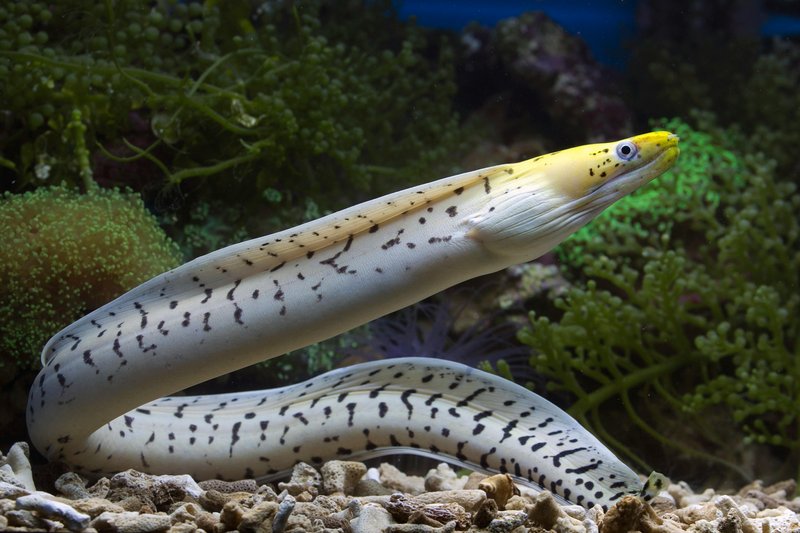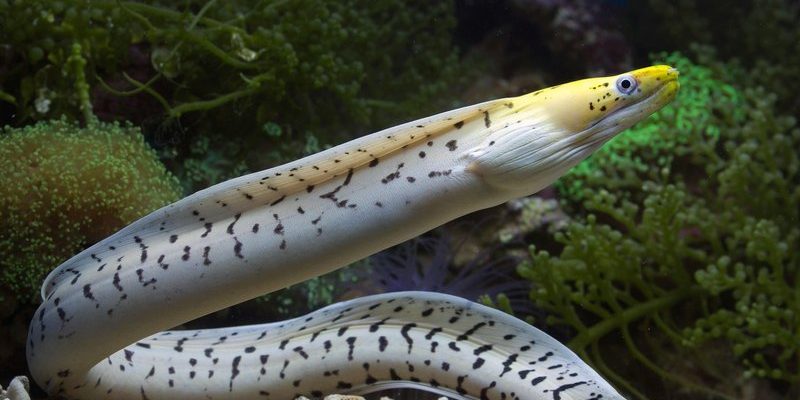
When you think about eels, you might picture them slithering along a riverbed or lurking in coral reefs. But the truth is, eels inhabit a variety of environments, from saltwater to freshwater. Let me explain where these slippery creatures can be found and what makes their habitats so special.
Types of Eels
Eels come in many shapes and sizes, with over 800 species known today. The two most common types are true eels and elvers. True eels, like the European eel (*Anguilla anguilla*), tend to live in both freshwater and saltwater, while elvers are juvenile eels that have recently migrated from the ocean to rivers.
One fascinating eel is the Moray eel, found primarily in tropical coral reefs. They’re not just beautiful to look at; they also play an important role in their ecosystem. Moray eels hide in crevices and rock formations, using their keen sense of smell to find prey. They’re like the bouncers of the reef, keeping the ecosystem balanced.
Key Types of Eels:
- True Eels
- Moray Eels
- Electric Eels
- Freshwater Eels
Oceans: Home of the Eel
When it comes to oceans, eels have a big presence. Many species, like the American eel and the European eel, spend a significant part of their lives in the ocean. These eels migrate thousands of miles from freshwater habitats to spawn in the Sargasso Sea, a unique area in the North Atlantic. Imagine these eels packing their bags for a long journey—it’s a remarkable feat of nature.
In the open ocean, eels often prefer the deep, dark waters where they can hunt for food while avoiding predators. Eels have adapted to live in various oceanic conditions, from the warm tropical waters near the equator to cooler, temperate zones. They are opportunistic feeders, munching on everything from small fish to crustaceans.
Ocean Locations:
- Sargasso Sea
- Tropical Coral Reefs
- Temperate Oceans
Freshwater Eels and Rivers
Freshwater eels, like the American eel, are a bit of a mystery. They start life in the ocean, but then they migrate up rivers, lakes, and streams, where they can live for many years. You might be wondering how they manage this journey. Well, eels are incredibly adaptable and can even traverse dry land if they need to. Their bodies are slim and flexible, which makes it easier for them to squeeze through small spaces or navigate rocky riverbeds.
Once they make their way to rivers, freshwater eels typically find hiding spots among rocks, under roots, or within submerged vegetation. Here, they thrive as they hunt for tasty snacks like small fish or invertebrates. Honestly, it’s like they’ve set up camp in a buffet of food!
Freshwater Habitats:
- Lakes
- Rivers
- Swamps
Estuaries: A Blend of Salt and Fresh
Estuaries, where rivers meet the ocean, are an essential habitat for many eel species. In these areas, the mixing of saltwater and freshwater creates a rich environment full of nutrients. Eels love this setting because it provides plenty of food and shelter.
The American eel, again, is a key player in these ecosystems. Young eels find their way into estuaries, where they can grow and mature before heading further upstream or out to sea. These areas are incredibly biodiverse, supporting various fish and wildlife. The health of estuaries is crucial, not just for eels but for the overall balance of aquatic ecosystems.
Estuary Benefits:
- Rich Nutrient Supply
- Safe Breeding Grounds
- Diverse Species Habitat
Human Impact on Eel Habitats
We can’t talk about where eels are found without mentioning how humans affect their habitats. Urban development, pollution, and climate change are just a few factors that disrupt the delicate ecosystems eels depend on. For instance, damming rivers can block eels from migrating upstream, impacting their ability to spawn and thrive.
In some regions, eel populations are declining, which raises concerns about their long-term survival. Conservation efforts are crucial. Protecting habitats and ensuring clean waterways can help maintain healthy eel populations. We need to be good stewards of the environment to keep our aquatic friends thriving.
Human Impacts Include:
- Pollution
- Habitat Destruction
- Overfishing
The Future of Eels
So, where are eels found? The answer is, in many places, from the depths of the ocean to the heart of rivers and the mixing waters of estuaries. Understanding their habitats and the challenges they face is essential for their survival. You might even consider how your actions impact these fascinating creatures.
As we look to the future, it’s vital to remember the interconnectedness of our ecosystems. By learning more about eels and supporting conservation efforts, we can help preserve their habitats and ensure that future generations enjoy the wonders of these unique fish.
In summary, eels are more than just fish; they’re a reflection of our environment’s health. Next time you hear about eels, think about the vast waters they navigate and the adventures they undertake in their quest for survival. Together, we can make a difference and keep the watery world of eels alive and thriving.

